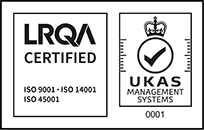Call us free on 0808 168 9540
Call us free on 0808 168 9540

Phlorum provides phase 1 and phase 2 white-clawed crayfish surveys across southern England, including Sussex, London, Surrey, Kent, Dorset, Hampshire and Wiltshire.
The white-clawed crayfish is the UK’s only native crayfish. It is a crustacean protected under Schedule 5 of the Wildlife and Countryside Act (1981) (as amended), which makes it illegal to harm, disturb, or take it from its habitat.
The white-clawed crayfish is threatened by the competition and disease risk presented by invasive, non-native American signal crayfish.
White-clawed crayfish prefer mineral-rich waters. Their main habitats are:
They spend most of their day under large stones or on the riverbank. They are mainly nocturnal and not very active in the winter. They are omnivores whose main diet consists of animal matter and decaying vegetation. They will also eat invertebrates and aquatic plants. They are a positive indicator of good water quality, as they are intolerant of pollution.
White-clawed crayfish survey techniques include:
A licence from the Environment Agency is required to catch and handle crayfish (e.g. to use bait traps).
The white-clawed crayfish breeding season is from late May to June, during which females may be carrying newly hatched young.
From a habitat management perspective, if the habitat must be destroyed, it is best to move female crayfish with eggs earlier in the breeding season rather than wait for the young to hatch, as catching the young is much harder.
It is best to survey outside the breeding seasons, with the optimum period being July to September.
Phlorum’s ecology consultants offer advice for developers concerned about impacting upon white-clawed crayfish; contact us for more information about our white-clawed crayfish surveys.










